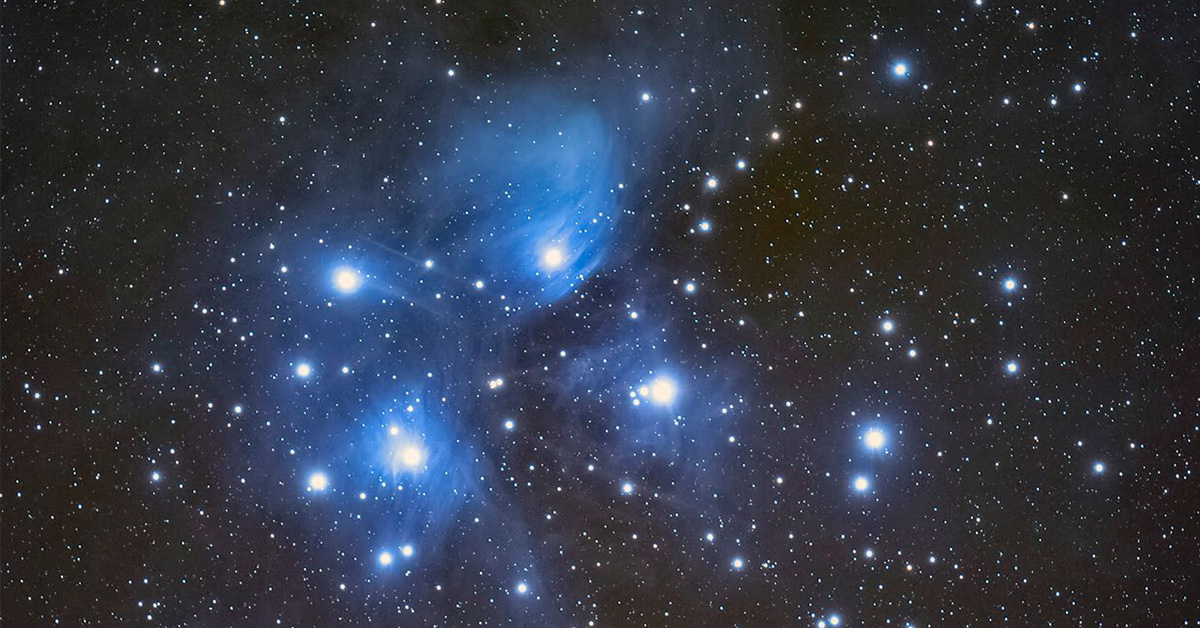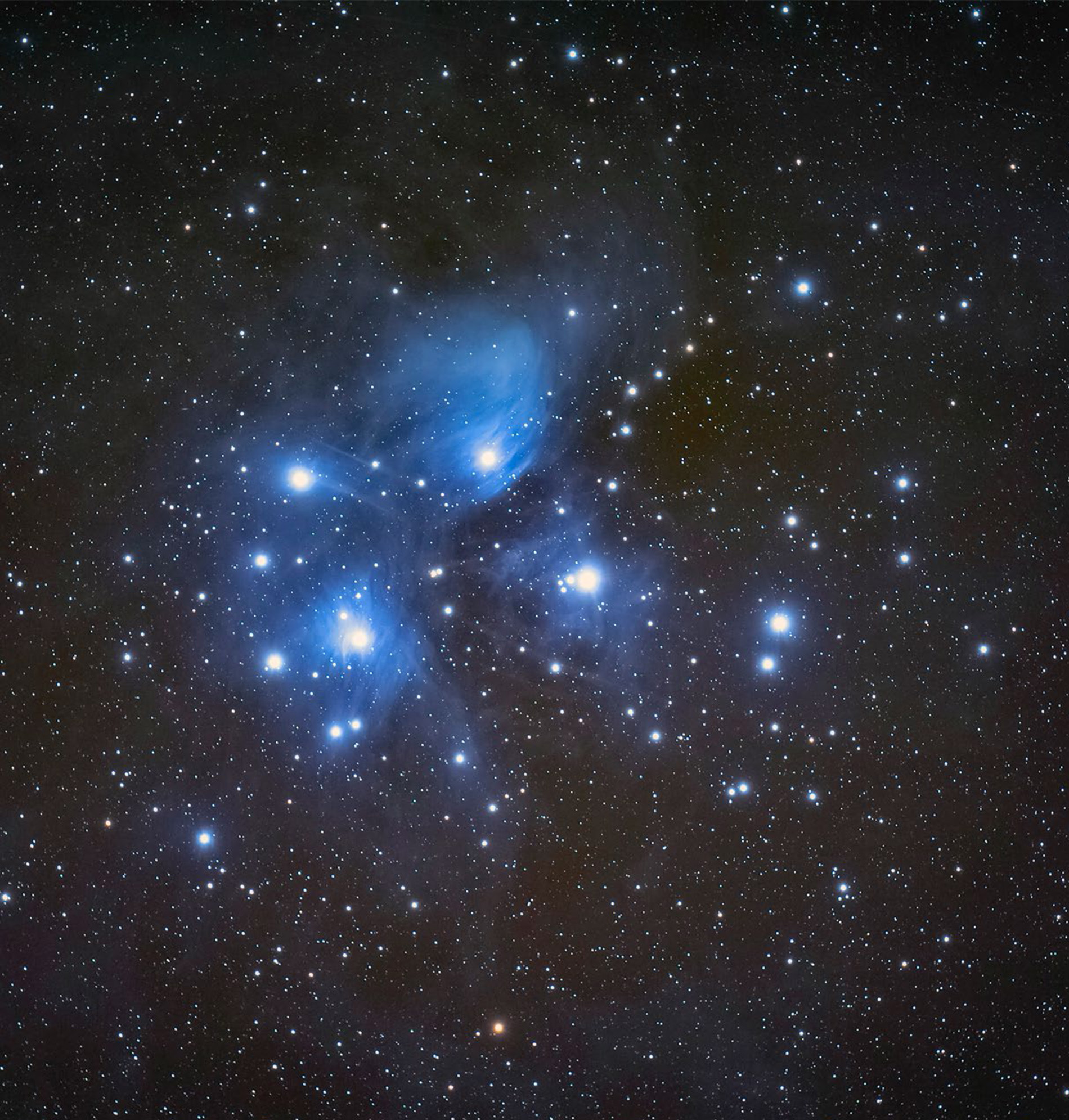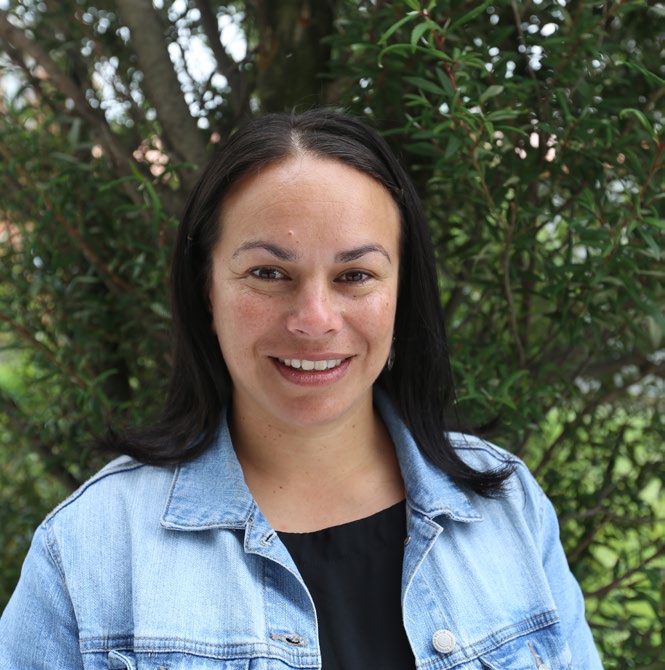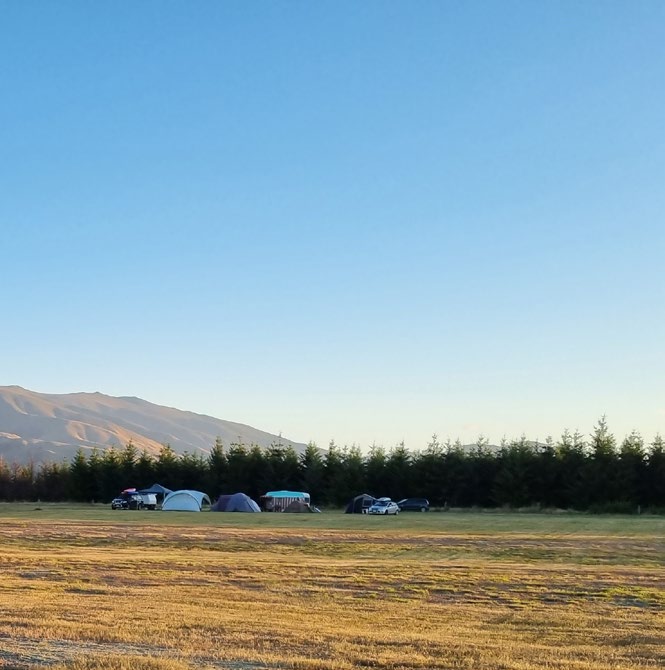
Culture Etc.

Above: The stars of Matariki are visible with the naked eye and can be viewed from various places on Earth, which is why they have names in so many different cultures. Photo: Fraser Gunn.
Rising Star
One of Aotearoa’s leading Māori astronomers — and one of the people you can thank for the Matariki holiday this year — lives her life by the stars, as tātai arorangi (Māori astronomy) undergoes an exciting revival.
By Petrina Darrah
It was the toilet trip that did it. Victoria Campbell (Kāi Tahu) and her husband Brett (Kāi Tahu, Te Ātiawa) were stargazing at a campground near Twizel while around them the earth radiated the last of the sun’s warmth and the sky darkened to violet. Stars were blazing through the dusk one by one, small bursts of light suspended against the velvet sky. The night sky is familiar terrain to Campbell, one of the country’s leading Māori astronomers, but on this evening the vast sweep of galaxies above glowed with an especially powerful fervour.
Somewhere in the dark behind them, Victoria and Brett’s 12-year-old son Tāwera was creeping wide-eyed through the star glow on his way to the toilet block. The next morning he greeted his mother excitedly: “Mum, I had the most amazing mimi last night.” Recalling the conversation, Campbell laughs. “He said, ‘I looked up and there were so many stars in the sky. I’ve never seen so many stars in the sky, ever’.” It was the clincher that helped the tight-knit family of four (their elder son Tūmai is 15) decide there and then — this is where they were meant to be.
It was January 2019 and just a couple of months later, before summer was over, the Campbells had purchased a plot of land about a kilometre away from that same campsite, choosing to ditch Dunedin city life in favour of the pristine night sky in the Mackenzie region. Plans to build a house on the site have been derailed by the pandemic and a dearth of building supplies so the permanent move has been delayed, but the Campbells still spend as much time as they can “inland”, shuttling back and forth from their home in Dunedin with an impressive swag of camping gear.
If this plot of land is their terra firma, the stars are the axis the family rotates around, connecting culture, history and a deep love for the environment. These values are also expressed through Campbell’s study of tātai arorangi, Māori astronomy.
Tātai arorangi was traditionally considered part of a wider body of knowledge known as te kauwae-runga, which loosely translates to “upper jaw”, and encompasses that which is celestial: the gods, stars, time and creation. Through colonisation, Māori astronomy, along with other Māori knowledge, was diluted, misinterpreted or lost altogether. However, in recent years there has been a revival of interest in Māori astronomy and Matariki in particular, which Campbell has been much involved in.
The recognition of Matariki as a new public holiday is the most impactful outcome of the revival in this interest for the general public. Campbell is a member of the Matariki Advisory Group, a small group of seven mātauranga Māori experts which provided recommendations to the government about the new public holiday. The group’s aim is to increase people’s understanding of mātauranga Māori by sharing Māori history, traditions and stories widely through the celebration of Matariki, and to build a stronger sense of shared national identity.
Campbell has been turning her gaze upward since childhood. As a school pupil she remembers seeing Halley’s Comet streak overhead, and she would become fixated on eclipses.

Victoria Campbell (Kāi Tahu). Photo supplied.
From a Western perspective, astronomy draws on a knowledge of physics, chemistry and mathematics. For Campbell, the value of tātai arorangi (she pronounces it ‘tatai aroraki’, in the Kāi Tahu dialect) is located in the rich histories encoded within the constellations, relaying knowledge through cultural narratives and stories that are handed down from generation to generation.
It’s this ancient knowledge that keeps drawing Campbell toward the stars, though she has been turning her gaze upward since childhood. She remembers seeing Halley’s Comet streak overhead as a primary school student in 1986, and was fixated on eclipses and other astronomical events. She has always been fascinated with the night sky, but it wasn’t until she was an adult taking part in a te reo immersion course that she was introduced to the concept of tātai arorangi.
The course was run by Massey University professor Rangi Mātāmua (Tūhoe), one of Aotearoa’s foremost Māori scholars, an expert in Māori scientific knowledge, astronomy and navigation and now the chair of the Matariki Advisory Group. Mātāmua’s work has been foundational in the recent revival of tātai arorangi, and his study and knowledge of Matariki is particularly well regarded. As a teacher, Mātāmua would weave proverbs and stories relating to Māori astronomy into his language classes; his oratory was the spark which led Campbell into the field. She already held numerous qualifications in Māori studies and teaching, including a Master of Indigenous Studies from the University of Otago, and added Māori astronomy studies to her list in the early 2010s.
Mātāmua has taught thousands of students over the years, but Campbell stood out from the start. She was particularly dedicated to learning, and committed to seeing Ngāi Tahu (the southernmost hapū of the South Island iwi are Kāi Tahu) return to Māori star lore practices, he says. “She’s one of the most kind-hearted people I’ve ever met. She just had this real genuine generosity toward others.” He recalls how, years ago, there was an effort to revive traditional practices of observing Matariki rise in the correct lunar phase in the morning, then cooking for Matariki and feeding the stars. Afterward, everyone would go back to the marae and share food together, and Mātāmua says Campbell — whom he calls Tori — wouldn’t sit down. “We’re all meant to be having a big meal, Tori was there serving everyone else.”
Astronomical knowledge appears in many areas of Māori teaching because it played a vital role for early Māori. From navigating across the Pacific Ocean to marking the start of each year with the rising of the Matariki cluster, to harvesting kaimoana or planting crops, the stars were a guide. “People who were familiar with the stars, astronomers or observers, would look to those particular clusters to get climate observations,” Campbell says. “Depending on the appearance of the stars, whether they were bright, dim, pulsating and so on.” Māori were one of many cultures around the world to revere the Matariki cluster, known as the Seven Sisters or Pleiades to the ancient Greeks, and Subaru to the Japanese. Observations of the stars and their associations helped predict what the weather would be like in the next season, and how it would impact the environment and growing food.
Today, Campbell, 45, works for her iwi as general manager for Te Rūnaka o Moeraki, one of the 18 Ngāi Tahu councils or papatipu rūnanga. She also works to engage whānau, hapū and community groups with Matariki, and spends time sharing her knowledge with her children’s school community — the boys attend Te Kura Kaupapa Māori o Ōtepoti in Dunedin, an immersion school. She is always studying or researching astronomy, as she helps to contribute to the growing body of information on the topic.
“She’s a machine,” chuckles her colleague Darren Solomon (Kāti Huirapa, Kāi Te Rakiamoa, Kāti Hinematua). “She’s what I would consider a rangatira in the true sense of the word, in the way that she’s able to weave different groups of people together.” Campbell has an innate ability to put people at ease, he says. “When you have the scientific community competing with the Indigenous knowledge community, you’re going to get clashes. If you can get someone who’s going to bring those people together that’s pretty impressive.”
If Campbell puts people at ease it’s because she always seems at ease herself. Her demeanour is unfailingly unruffled, whether you’ve caught her in a spare moment before a hui, or while she’s in the passenger seat of the family car as they zip out to Takapō to catch a meteor shower. She is the kind of person who says “one” instead of “you”, eloquent and efficient — but also warm, slyly funny, and often seen with a smile crinkling her eyes.
Campbell has spent the past decade learning from experts who came before her, making her own observations and finding patterns between celestial movements and changes in the environment, as well as researching Ngāi Tahu’s tribal narratives for information about star lore. It has taken some persistence. “A lot of that knowledge sits within other disciplines,” she explains. “Mahinga kai, or our food practices, weaving, boat building and navigation. The knowledge is scattered around. It’s not something you can look up in an index and hope to find a wealth of knowledge.”
Learning about tātai arorangi has brought with it a sense of reassurance that the practices and knowledge of her ancestors live on. She marvels at their intimate understanding of the natural world and ability to observe and understand celestial movements with just the naked eye, so many years ago. Various stars in the Matariki cluster are associated with different domains of the natural world. Waitā, for example — one of the stars closest to the horizon — is linked to salt water, while above it Waitī is linked to fresh water. This Māori worldview, te ao Māori, which conceptualises the interconnectedness of all parts of the environment, is recognised in the 2022 edition of Environment Aotearoa, the triennial report on the health of nature in our nation. In this way, Matariki is used to link the past, present and future while connecting people and the environment. It’s elegantly done.
These links allow us to think about our bonds with and commitment to the environment, Campbell says. She has a vision of encouraging positive environmental actions during Matariki, such as planting trees or clearing litter out of waterways. Matariki is about more than connections with each other, it also invites reflection on our place in the natural world and our responsibility to the environment.
The Campbells’ section in Twizel lies on a quiet road lined with tidy houses — but when she first stepped on to the land, Campbell didn’t notice her neighbours at all. Later, while wondering about this omission, her husband Brett, who works locally as a builder, pointed out that when they were deciding where to buy she had been looking everywhere but ground level. She’d had her eyes trained on the mountains and sky, needing to know she could look east for morning stargazing, and south to where Te Pae Māhutonga, the Southern Cross, is anchored. To the north, they can see the mauve ripple of Ruataniwha, the Ben Ohau Range, and to the west the tussocked ridges rising above Lake Ōhau. Stand in the right spot, and they can see their iwi’s ancestral mountain, Aoraki, rising like a fin on the misty horizon. Campbell had felt an immediate connection to the land. It felt like home.
Then, of course, there’s the night sky, with its unfathomable multitude of stars. One of her simple joys is sitting in a deck chair in the late evening, pointing out constellations, shooting stars and even meteors to her friends and family. It’s these kinds of immersive experiences, giving a deeper connection with nature and each other, that Campbell most values in her teachings. “We have grand plans,” she says. “We’ll build something that accommodates the work that I do, a little wānanga. I don’t know what the English equivalent would be but it would be like a symposium or a conference for immersive learning experiences.” Here she would teach te reo and mātauranga Māori, specialising in tātai arorangi. “We want to have papakāinga housing, a place that can accommodate not only our children but their future spouses and our future grandchildren,” Campbell says.
They also plan to grow their own kai and plant by the maramataka, the Māori lunar calendar, and share the skills with rangatahi. Classmates of Tūmai and Tāwera are frequent visitors to the section, where Campbell relishes being able to give them the chance to live life outdoors, with bare feet and grazed knees, closer to the earth and night sky.
Around them the earth radiated the last of the sun’s warmth and the sky darkened to violet. Stars were blazing through the dusk one by one, small bursts of light suspended against the velvet sky.
One of Campbell’s proudest moments was when one of her son’s Dunedin classmates started pointing out stars and constellations such as Tautoru (Orion) to other children. “I was really stoked that she had remembered and was interested enough to point it out to other kids,” she says. “Then I realised that nobody did this for me when I was a kid. The fact I’m able to do that with them and they’re naturally sharing that knowledge or mātauranga with other people — yeah, it was a real moment.” Campbell, who only began learning te reo in high school, has also been able to share the language with her children, both of whom have been raised as fluent speakers.
Her holistic view of the natural world has led her more recently into advocacy, looking at the impact of light pollution on the night sky. “When I went to Te Manahuna or the dark sky area, it was breathtaking to look up and realise what I wasn’t seeing from my home in the city.” The fact it was only a three-hour journey away highlighted the issue. “Think of the sky as a storybook,” she says. “When there’s light pollution you can’t see all the words on the page. We need to make some changes so that we can always read that book — that’s our life book. That’s the world’s origin book.”
In Te Manahuna/Mackenzie the success of the community in protecting the area’s cultural and natural landscape is internationally recognised. Campbell is on the board of the Aoraki Mackenzie International Dark Sky Reserve, the first in the southern hemisphere and only the third in the world when it was certified. The region has established lighting ordinances, revolutionary in New Zealand, for community lighting. It might be a blueprint for the rest of the country, as we start to think more about our connection to the night sky.
“My big fear is that New Zealand will become like other places in the world that can’t see stars,” Campbell says. “Not on my watch.”

Campbell says her family’s set up in Twizel would best be described as glamping —
they’re fully kitted out, including a solar shower and kitchen area. Photo: Supplied.
Petrina Darrah is a freelance writer based in Tāmaki Makaurau/ Auckland.
This story appeared in the July 2022 issue of North & South.


